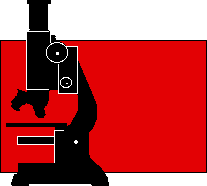|

Lesson 4.1 Discrete Probability Distributions: An Introduction
Random Variable
A random variable assigns values to the outcomes of a statistical experiment. Upper case letters denote random variables.
Example:
- Let X = the number of cars in a household.
- Let Y = the amount of time (in minutes) a college students waits in line at the cafeteria.
Discrete Random Variable
A discrete random variable is a random variable that assigns countable values to the outcomes of a statistical experiment. Often the phrase "the number of" is used in the description of a discrete random variable.
Example:
- Let X = the number of patients cured from a particular disease.
- Let Y = the number of questions that a statistics student answers correctly on the first exam.
Discrete Probability Distribution Function (Discrete PDF)
A discrete probability distribution function (discrete PDF) consists of
- countable numerical values.
- probabilities for those numerical values. The sum of the probabilites is 1.
Example: A controversial drug is given to TWO patients to cure a particular disease.
P(a cure for each patient) = 5/6.
P(no cure for each patient) = 1/6.
 
Let X = the number of patients (out of two) cured. Then, because one patient being cured is independent of the other patient being cured, we have:
P(0 patients out of two cured)
= P(1st person not cured)*P(2nd person not cured)
= (1/6)(1/6) = 1/36
P(1 out of two cured)
= P(1st person cured)*P(2nd person not cured) +
P(2nd person cured)*P(1st person not cured)
= (5/6)(1/6) + (1/6)(5/6) = 10/36
P(both patients cured)
= P(1st person cured)*P(2nd person cured)
= (5/6)(5/6) = 25/36
We can represent the discrete PDF in a table:
X |
P(X)
|
|
0
|
P(X=0) = 1/36
|
1 |
P(X=1) = 10/36 |
|
2
|
P(X=2) = 25/36
|
Notice that (1/36) + (10/36) + (25/36) = 1.
Please continue to the next section of this lesson.
Up » 4.1 Discrete Probability » 4.2 Expected Value » 4.3 Binomial Probability » 4.4 Poisson Probability
Lesson 1 | Lesson 2 | Lesson 3 | Lesson 4 | Lesson 5 | Lesson 6 | Lesson 7 | Lesson 8 | Lesson 9 | Lesson 10 | Lesson 11 | Lesson 12
|